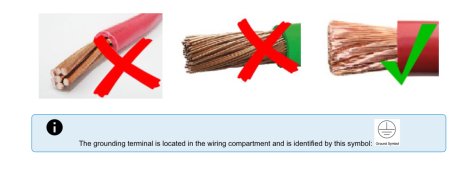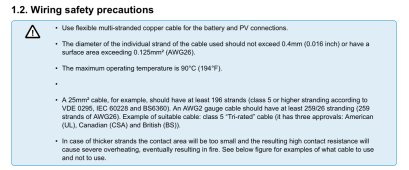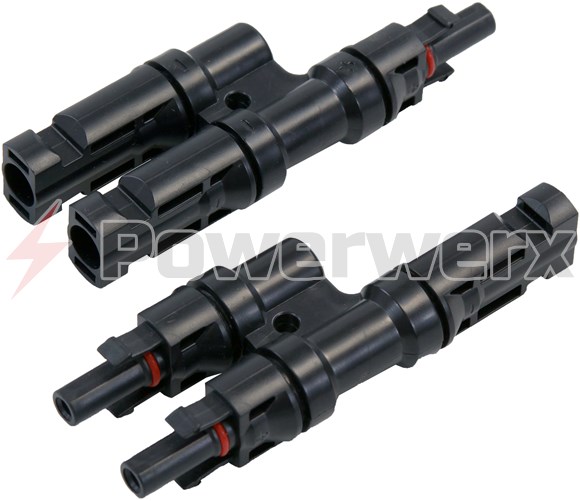Thanks for this response Boondocker!. Just to clarify on the max gauge wire for controller. My controller specs state 8 AWG Max. So I could use a AWG 8 or smaller (ex: 10 AWG) - but not a a larger size cable (ex: AWG 6). Because smaller the number of the awg wire the bigger the cable is - I just want to make sure I understand "max" correctly. I plan to go with the 8AWG, but want to make sure I understand it fully.Check the specs on your solar charge controller. My Victron 100/50 is spec'd for a maximum of 6 gauge wire.
Second question - I want to install several meters on my system, preferably to measure Solar, Charge, Discharge, and Load. I purchased 4 Bayite DC 6.5-100V 0-100A (PZEM-051) meters and was looking at the manufactures wiring diagram (https://images-na.ssl-images-amazon.com/images/I/71vyuArVdSL._SL1500_.jpg). I understand wires from the solar controller to the battery bank, but their diagram also shows wires also connecting directly to the inverter from the controller which surprised me. I reached out to the manufacturer and they stated yes, during the daylight hours the controller will can feed the inverter directly, and any power from the controller not consumed by the inverter goes to the battery. Just wanted to verify this - ok to feed directly from the controller to BOTH the inverter and the battery bank?
Related to the above - if the answer is that it is fine to feed both battery bank and inverter from solar controller:
-- The manufacturer diagram shows feeds to both the battery and the inverter out of the battery output slots on the controller. Since I also have load slots on my solar controller, should I feed the inverter from the "load" slots on my Solar controller, and the battery bank from the "battery" slots on the solar controller? I assume yes. And if yes, I then also feed my inverter from my battery bank, so my inverter will have two input sources as opposed to a single feed just from my battery bank...correct?
Thanks






